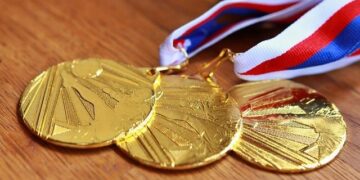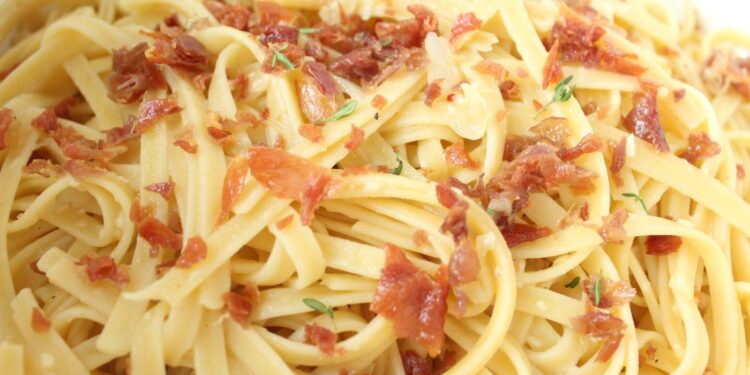In a culinary breakthrough that intertwines the worlds of science and gastronomy, physicists have unveiled the secrets to crafting the perfect pasta, diverging from traditional family recipes that have long dominated kitchens around the world. While Mamma’s time-honored techniques have been cherished for generations, a team of researchers has applied advanced scientific principles to analyze the complex interactions of water, flour, and cooking methods, paving the way for a new understanding of pasta perfection. This study, published recently in a prominent scientific journal, not only challenges conventional wisdom about pasta preparation but also promises to elevate the humble noodle to unprecedented heights in both texture and taste. As the culinary community digests these findings, the age-old debate over the authenticity of pasta-making continues, raising questions about the intersection of tradition and innovation in our kitchens.
Revolutionary Research Illuminates the Science Behind Ideal Pasta Texture
In a surprising twist that combines culinary delight with the rigor of scientific inquiry, a team of physicists has unveiled what they believe to be the secret to achieving that quintessential al dente pasta texture. Through a series of meticulous experiments, the researchers have dissected the very structure of pasta as it cooks, shedding light on the intricate relationship between water absorption, starch gelatinization, and protein alignment. They discovered that the cooking temperature and time not only affect flavor but also have a profound impact on the molecular arrangement of the pasta, ultimately dictating its bite. This cutting-edge research demonstrates that achieving the perfect texture is less about traditional cooking methods and more about understanding the underlying physics at play.
Key findings from the research reveal several factors influencing pasta texture:
- Water Temperature: The optimal temperature range plays a critical role in ensuring even cooking.
- Cooking Duration: Maintaining a precise cooking time is essential to avoid mushiness.
- Starch Properties: The specific formulation of dough influences the pasta’s ability to absorb water.
To further illustrate these findings, the table below summarizes the ideal cooking parameters for various pasta types based on their respective textures:
| Pasta Type | Ideal Cooking Temperature (°C) | Recommended Cooking Time (minutes) |
|---|---|---|
| Spaghetti | 95 | 8-10 |
| Penne | 95 | 11-13 |
| Fusilli | 95 | 10-12 |
Innovative Methods Contrast Traditional Techniques in Culinary Excellence
Recent research has challenged long-standing culinary traditions by introducing advanced scientific methods to achieve pasta perfection. In contrast to the cherished recipes passed down through generations, which often rely on intuition and experience, scientists have analyzed the molecular structure of various pasta types and their interactions with water during cooking. This empirical approach has revealed that precise measurements of time, temperature, and hydration levels can significantly enhance texture and flavor, highlighting how science can revolutionize our understanding of cooking.
As traditionalists may argue that the heart of cooking lies in the artistry of personal technique, the innovative methods introduced by physicists prioritize consistency and reproducibility. By employing technologies such as thermal imaging and fluid dynamics simulations, researchers have determined optimal cooking processes that produce the ideal al dente bite and maximize flavor extraction. Some findings include:
- Ideal water temperature: Maintaining a consistent temperature of 89°C for optimal starch gelatinization.
- Hydration ratios: Using a water-to-pasta ratio of 5:1 for perfect absorption.
- Stirring frequency: Recommendations for continuous stirring to prevent clumping.
Expert Recommendations for Perfecting Pasta: From Temperature to Timing
Recent studies conducted by physicists have revealed that achieving the perfect pasta hinges significantly on both the temperature and the timing of cooking. To create that ideal al dente texture, it is essential to maintain the water temperature at a rolling boil. This constant heat facilitates a uniform cooking process, allowing starches to gelatinize properly. Cooking at lower temperatures can lead to uneven results, where parts of the pasta become overcooked while others remain underdone. The findings suggest that a return to traditional methods of boiling water vigorously can elevate the quality of pasta dishes, much to the delight of food purists.
Timing is another critical component that can make or break your pasta experience. Experts suggest using a timer to ensure precision, as even a minute can result in a chewy or mushy product. Here are some recommended cooking times based on the type of pasta:
| Type of Pasta | Suggested Cooking Time (minutes) |
|---|---|
| Spaghetti | 8-10 |
| Penne | 10-12 |
| Fettuccine | 10-12 |
| Macaroni | 7-9 |
| Lasagna sheets | 10-12 |
These precise adjustments in temperature and timing are essential for maximizing pasta quality, proving that scientific principles can work in harmony with culinary tradition. As chefs and home cooks alike incorporate these findings, the debate over the “right way” to cook pasta may evolve, blending the old-world approach with new-age understanding.
Wrapping Up
while traditional methods of pasta-making have long been cherished and passed down through generations, the revolutionary findings by physicists offer a new perspective on achieving culinary perfection. By applying scientific principles to the art of pasta, researchers have unlocked potential that could forever change our dining experience. Yet, despite these groundbreaking insights, the question remains: can science truly replicate the warmth and love inherent in the way Mamma prepares her pasta? As the debate between tradition and innovation continues, one thing is clear: the future of pasta is not just about taste, but also about the delicate balance between art and science. As we embrace these advancements, we must not forget the heart of Italian cuisine that lies beyond the laboratory.































